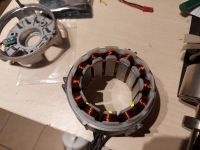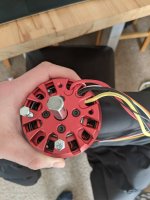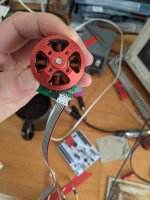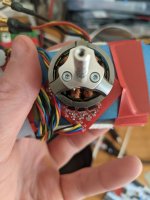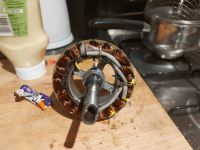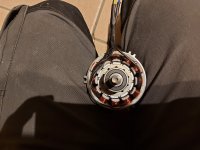sdobbie
100 W
Hi everyone, today I got a BLDC motor out of a broken 36v cordless chainsaw and was wanting to add hall sensors to it so that I can test controllers properly. I was wondering what the best position for the sensors would be? I could epoxy them between the spaces between the windings (shown in red) Or space them differently so that one of them is embedded into the nylon coil former(shown in yellow) I could get more pictures of the rotor if that would help.
